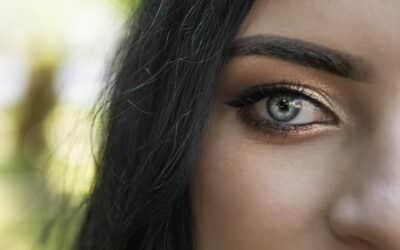Henna art is a captivating form of body adornment that weaves together intricate beauty and centuries of tradition. Tracing its roots back to ancient cultures in South Asia, the Middle East, and Africa, henna has been used for more than just its dyeing abilities. It carries stories and symbols passed down through generations, marking rites of passage and celebrating joyous occasions.
Though its use is steeped in historical significance, henna art has continued to evolve, becoming a canvas of personal expression and modern fashion. It captivates individuals not only with its detailed designs but also with the deep colours and cultural resonance it brings. Henna serves as both an artistic statement and a connection to timeless customs.
As henna art gains popularity in contemporary beauty routines, it offers a unique blend of cultural appreciation and personal style. Whether you’re drawn to it for its rich history or its aesthetic appeal, henna remains a vibrant testament to the enduring art of adornment. Embracing this beautiful tradition provides an opportunity to express individuality while honouring a captivating cultural legacy.
The Cultural Significance of Henna Art
Henna art, steeped in rich history, holds a special place in various cultures around the world. Originating over 5,000 years ago, it has been an integral part of celebrations and traditions, especially in regions such as South Asia, the Middle East, and North Africa. This natural dye, derived from the Lawsonia inermis plant, is used to create temporary body art, particularly for weddings, religious ceremonies, and festivals.
Throughout these cultures, henna is applied during significant life events, symbolising joy, beauty, and spiritual awakening. Weddings often see intricate henna designs adorning the bride’s hands and feet, a practice believed to bring prosperity to the newlyweds. The application of henna during such ceremonies represents a ritual of joy and unity.
In addition to weddings, henna is used during festivals such as Eid and Diwali. During these celebrations, both men and women adorn themselves to celebrate the occasion and express cultural identity. The art of henna is not just about beauty; it’s a deep-rooted tradition that reflects spirituality and community.
Moreover, henna serves as a canvas for cultural storytelling, where each design motif carries a specific meaning. For example, floral patterns may symbolise joy and happiness, while paisley designs can represent life and eternity. This ancient art form is a vibrant expression of cultural heritage, transcending time and fashion trends.
The Process of Creating Henna Art
Creating henna art is a meticulous process that involves several steps and requires a skilled hand. To start, the henna paste is made by crushing the leaves of the henna plant into a fine powder, which is then mixed with liquid to create a smooth consistency. Essential oils like eucalyptus or lavender are often added to enhance the dye’s longevity and richness.
Once the paste is prepared, it’s carefully applied using cones, similar to piping bags, which allow for precise control over the flow of henna. The artist crafts intricate designs, drawing inspiration from traditional symbols or contemporary motifs. These designs range from delicate floral arrangements to bold geometric patterns, each reflecting a unique style and cultural significance.
Some popular motifs in henna art include:
– Floral Patterns: Depicting nature and beauty, often used for feminine designs.
– Paisley Shapes: Symbolising fertility and luck, common in bridal henna.
– Mandala Designs: Representing the universe or wholeness, used for spiritual purposes.
After application, the henna paste needs to dry completely, usually taking a few hours. Once it has dried, the paste is gently scraped off, revealing the orange stain beneath, which gradually darkens over the next 24 to 48 hours. The final result is a deep, rich stain that can last from one to three weeks, depending on skin type and care.
This artistic process is not just about applying a design; it involves creating a piece of art that is both personal and cultural. Henna artists bring skill and creativity to their work, ensuring each design is meaningful and beautifully executed.
Modern Interpretations and Trends
In recent years, henna art has found new expressions within contemporary fashion and beauty scenes. While maintaining its cultural roots, it has adapted to new styles and preferences, appealing to a broader audience. Social media has played a role in showcasing innovative designs and applications, making henna more accessible and trendy.
Modern henna encompasses a range of styles, from minimalistic patterns to intricate tattoos that blend traditional motifs with modern aesthetics. Temporary henna tattoos have also become popular, allowing people to enjoy the beauty of henna without a long-term commitment. These varied styles cater to different tastes, whether one prefers a small, delicate design or a bold, statement piece.
Henna’s versatility extends to its fusion with other cosmetic treatments. Henna Brows, for instance, use henna to achieve a fuller, well-defined eyebrow look that lasts longer than regular tinting. Combining classic henna properties with new beauty trends offers an exciting way to experiment while still honouring the art’s origins.
Overall, henna art remains a dynamic form of self-expression, celebrating both individuality and cultural heritage. Its ability to evolve while retaining its essence ensures that henna continues to enchant and inspire across generations.
Caring for Your Henna Art
Proper aftercare ensures your henna design stays vibrant and lasts longer. First, allow the paste to stay on the skin as long as possible, ideally overnight, to deepen the stain. Once dried, gently scrape off the paste instead of washing it with water initially, as this helps retain the colour.
To maintain the vibrancy, avoid excessive exposure to water, especially in the first 24 hours after application. Moisturising with natural oils like coconut or sesame oil can also help protect the henna and increase its longevity. Keep in mind that factors such as skin type and lifestyle can affect how long the henna lasts.
Here are some quick tips for great henna aftercare:
– Avoid Soap and Chlorine: These can fade the design quickly. Be careful during activities like swimming.
– Stay Hydrated: Keeping the skin hydrated can help maintain the stain.
– Limit Abrasion: Try not to scrub the area or use exfoliants directly on the henna.
Preparing your skin before getting henna can also improve results. Exfoliate the area gently beforehand to remove dead skin cells, ensuring a smooth application surface. Avoid applying lotions or oils right before the henna to help the dye adhere properly to the skin.
Conclusion
Henna art beautifully bridges the gap between ancient traditions and modern aesthetics, showcasing its adaptability and timeless appeal. As a practice rooted in culture and celebration, henna continues to captivate and inspire, offering a canvas for personal expression and belonging. Embracing henna art is a way to connect with its rich history while enjoying its aesthetic beauty in contemporary life.
At Elegant Beauty and Brows Tweed Heads South, we celebrate this cherished art form by offering expert henna services that honour its tradition and creativity. Whether you’re looking to enhance an event with stunning designs or wish to explore the beauty of henna brows, our skilled artists are here to bring your vision to life. Visit us to experience the magic of henna and let your style shine with elegance and grace.




0 Comments